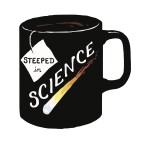
Rubble in Nepal after the April 2015 earthquake. Searching for survivors is the most pressing task after a disaster like this one.
People who work in search and rescue are constantly addressing the problem of how to search through a pile of rubble (or a fire, or a river) and find living victims that need rescuing. In the aftermath of the Nepal earthquake on April 25 (2015), a new device was used to search out victims by looking for their heartbeats: FINDER.
FINDER uses microwave radar, shooting microwave signals toward rubble and listening for the reflections of that wave. It can be set to pay attention to reflections from a certain range away, say 10 to 20 feet away from the laptop-sized device. Like a police radar that uses the Doppler effect to determine how fast cars are going on the highway, the Doppler radar can detect movement. If it bounces off of something that’s moving, its frequency changes by a tiny bit, which it notices when the signal bounces back. It can be very small movement. The movement of the chest cavity in breathing or a beating heart. Even the throbbing of an artery in a forehead. It can detect life, even if the victim is unconscious and not making any noise.
It’s very exciting as a new search tool in the immediate aftermath of a disaster. It can scan an area quickly for heartbeats through as much as 30 feet of rubble, passing through concrete and wood to the body below (it wouldn’t

FINDER uses the Doppler effect to detect living victims. In this case, a rising chest causes the reflected microwave frequency to be higher than the frequency produced by FINDER. If the wave bounces off something not moving, the reflected frequency is the same as the original frequency.
work in water, but just about any dry medium would work). It can measure the characteristics of that beating heart well enough to distinguish it from mechanical vibrations as well as from animal heart beats. Animals have different enough cardiac patterns that they can be distinguished from each other, and the developers have even been asked if they could identify endangered rhinocerous in southern Africa so that they can be protected. They say that they’ll work on it.
So who are these developers? They work at the Jet Propulsion Lab for NASA. What is NASA doing searching for victims after an earthquake? I love this part. NASA has a whole division that looks for opportunities for what they call technology transfer. They look at what NASA scientists and engineers are developing for space science and apply those technologies to radically different problems. This is the essence of creativity.
Microwave radar has been developed at NASA for several reasons. One application is on a mission just deployed this last January to study soil moisture the world over. Microwaves go through dry dirt just fine, but tend to bounce back more often as they hit water, so the characteristics of a microwave shot down from a satellite, bouncing off the soil (or the water in the soil beneath the surface) and returning to the satellite can tell us about water content of soil. That’s a direct agriculture study. The same technology is being used to measure variations in sea level around the world. NASA actually spends a lot of its resources studying the planet that’s most important to us: Earth.
The microwave radar analysis algorithms can also be used to look for telltale wobbles in a star’s position that come from a planet pulling on it. The same technique can be used to detect tiny vibrations of a star and discover a planet as can be used to detect tiny vibrations that tell us that there’s someone alive under all that rubble. The same technology that pings microwaves off the surface of the ocean rising and falling can detect a chest rising and falling as breath comes in and out. I don’t know who the person was who was sitting in a room watching the technology from a satellite and thought: Hey! We can use this to find buried people! But that person has my admiration.
The FINDER technology is still in the early stages. It’s not quite available commercially, but it’s been tested in six states, including my home state of Indiana. They’re getting close to a model that’s ready to go out. And that’s good news for search and rescue teams and for fans of technological creativity everywhere.


Leave a Comment
You must be logged in to post a comment.